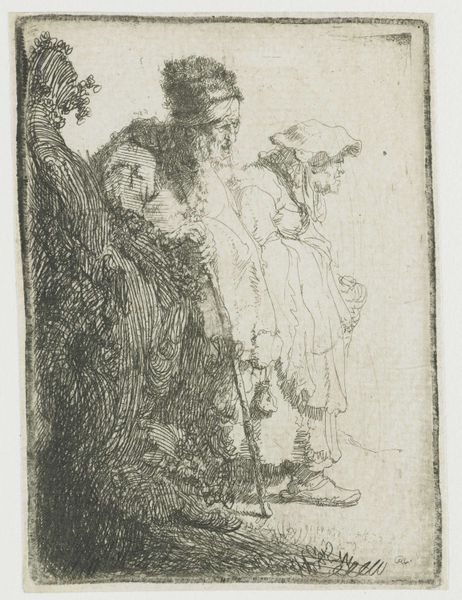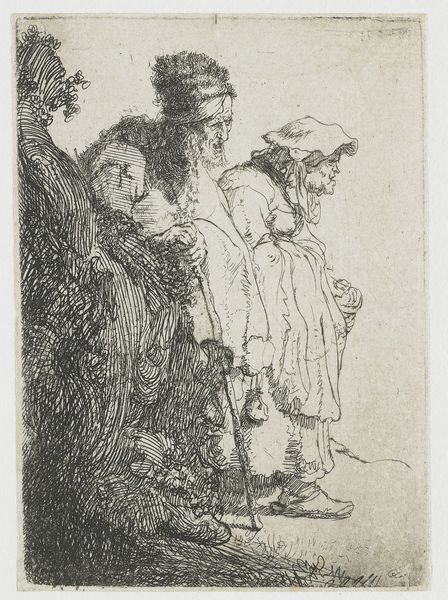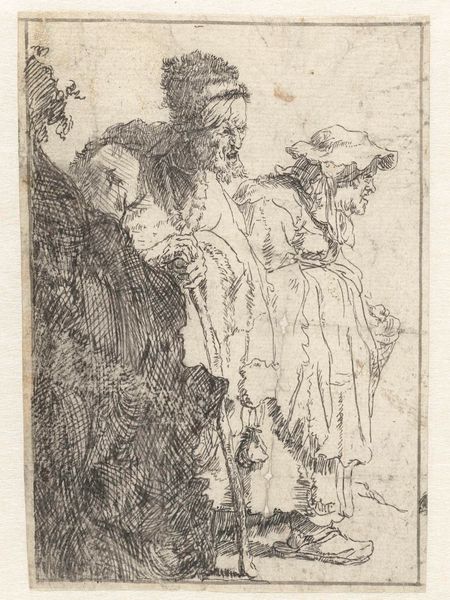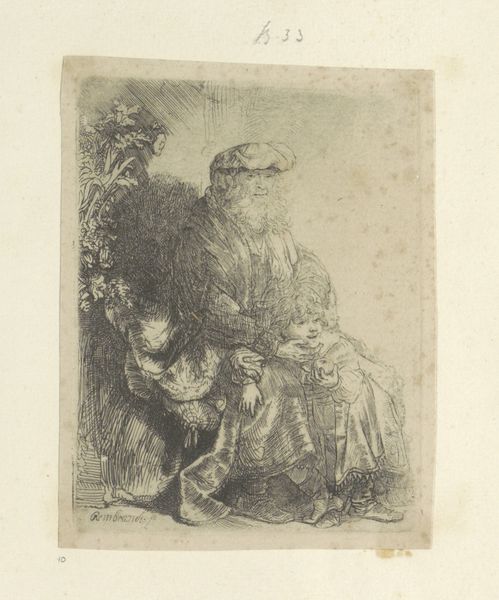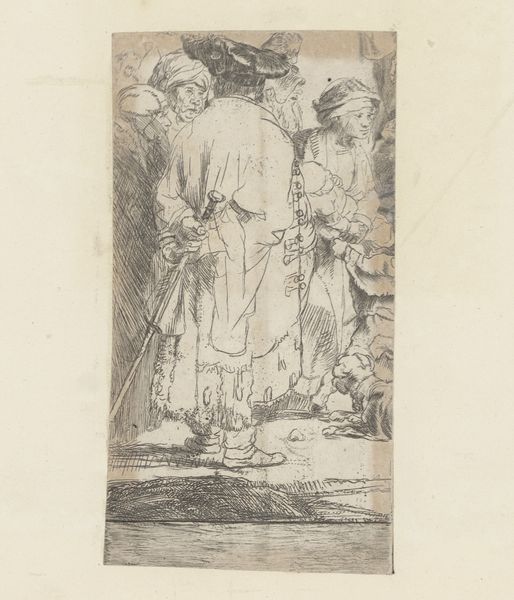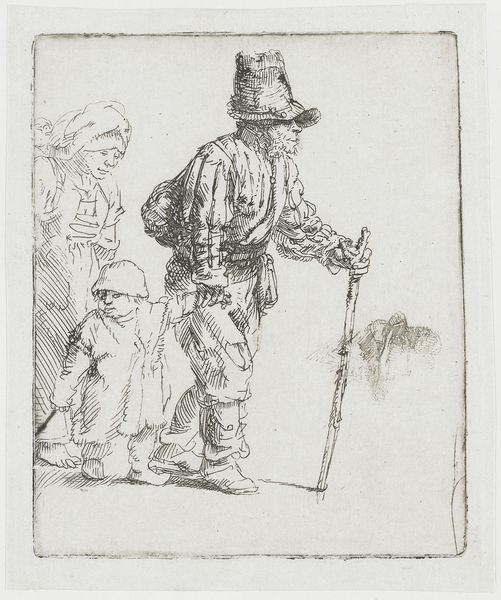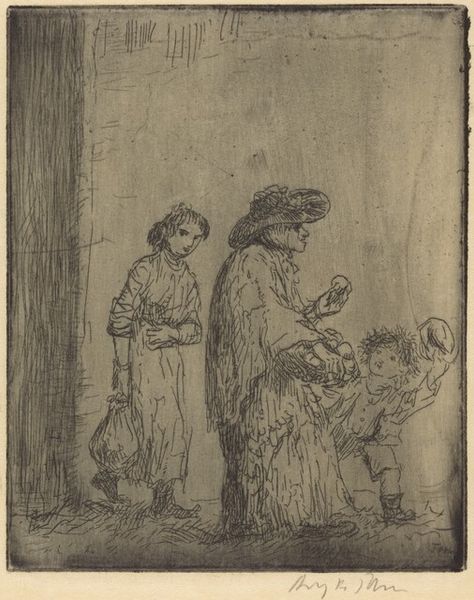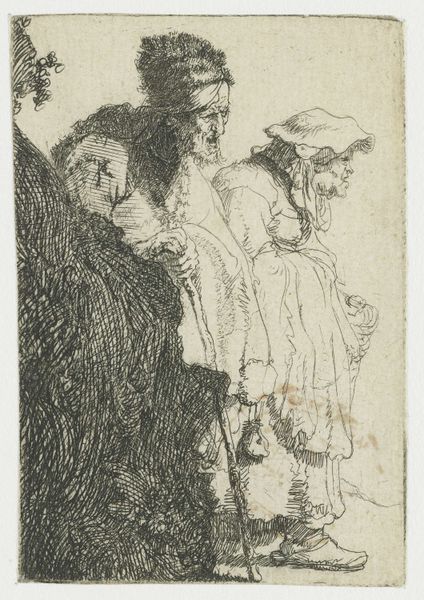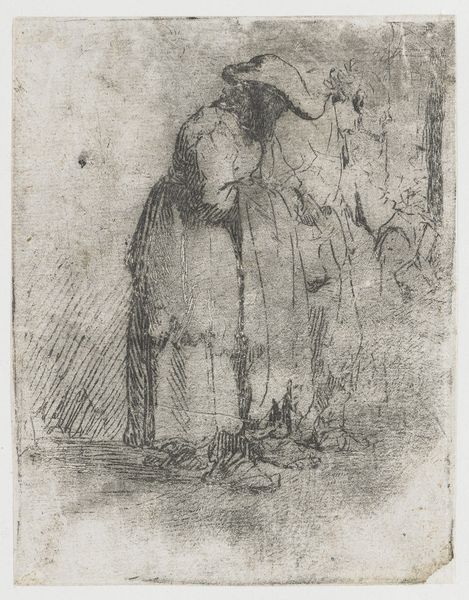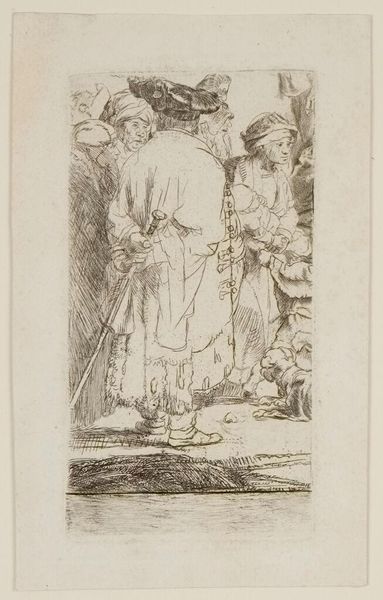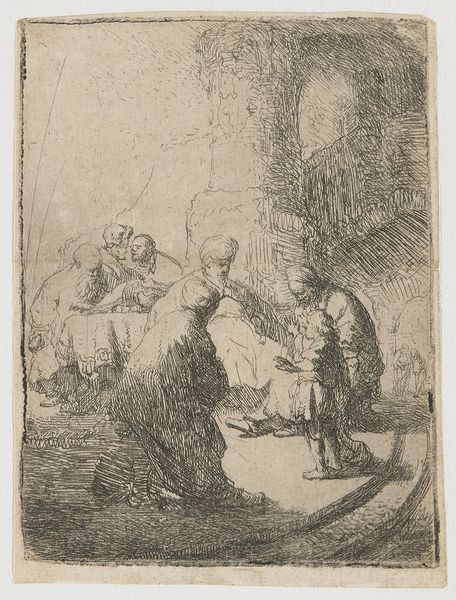
drawing, print, etching
#
portrait
#
drawing
#
ink drawing
#
baroque
#
dutch-golden-age
# print
#
etching
#
figuration
#
genre-painting
Dimensions: 4 7/16 x 3 3/16 in. (11.2 x 8.1 cm) (plate)
Copyright: Public Domain
Rembrandt van Rijn made this etching, "Beggar Man and Beggar Woman behind a Bank," using metal and acid. The process of etching is fascinating. Rembrandt would have covered a metal plate with a waxy ground, then scratched his design into it with a needle. The plate was then immersed in acid, which bit into the exposed lines, creating grooves. Ink was applied, the surface wiped clean, and the image transferred to paper under immense pressure. Look closely, and you can see how the etched lines vary in depth and thickness, creating a range of tones and textures. This was all achieved by controlling the amount of time the plate spent in the acid bath, and the pressure he exerted with his hand. In Rembrandt’s time, printmaking was a powerful tool for disseminating images. It democratized art, making it accessible to a wider audience, and offered artists an income independent of wealthy patrons. This print provides a glimpse into the lives of the less fortunate, a subject rarely depicted at the time, reflecting Rembrandt's interest in the human condition. The finished print bears the marks of his labor, and of an economic system in transition.
Comments
No comments
Be the first to comment and join the conversation on the ultimate creative platform.
